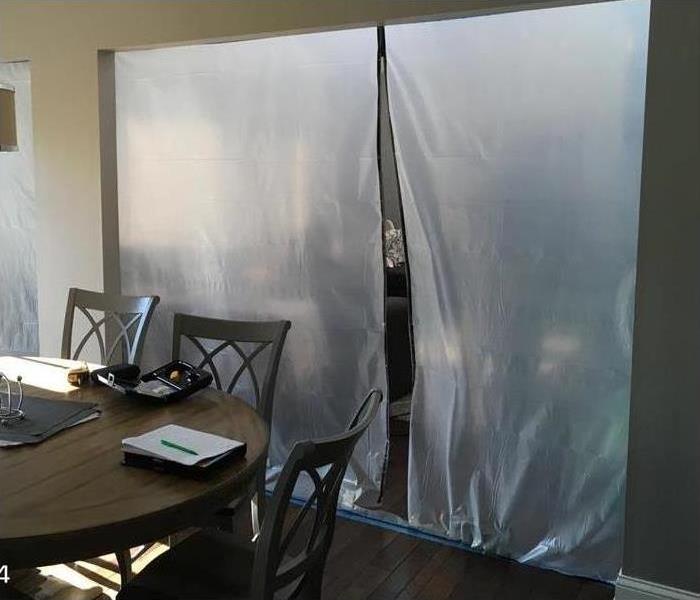Steps To Remove Commercial Mold
4/8/2022 (Permalink)
Mold Remediation
Mold loves moist, dark areas in your commercial building. If left unattended, mold growth can cause extensive damage to your facility in Hanover Park, IL. To eliminate a mold problem, it’s important to understand the typical steps involved in mold remediation.
1. Call an Expert
Don’t try to clean up the mold yourself. Contact a mold remediation expert as soon as possible to lead the effort. The professionals will follow the steps below, as necessary.
2. Assess and Inspect the Facility
Professionals assess the situation by looking for water damage and mold using technological equipment.
3. Contain the Mold
High humidity can trigger further growth quickly, so experts use containment procedures to reduce the risk of spreading mold. Negative air chambers are used to keep affected areas from contaminating other areas. HVAC systems and fans are turned off to discourage mold growth.
4. Utilize Air Filtration Equipment
Air filtration systems help capture and remove mold spores from the air, along with HEPA vacuums and air scrubbers.
5. Remove Moldy Materials and Clean Surfaces
The amount of mold remediation necessary depends on the amount of mold and the texture of the surfaces. Applications using antimicrobial treatments eliminate colonies of mold and reduce the likelihood that they will return. Porous materials containing mold are carefully removed and disposed of properly.
Materials that can be salvaged, such as drywall, furniture and carpeting, are cleaned and sanitized using specialized cleaning techniques. Odors can also be removed from these materials with deodorizing treatments and fogging equipment.
6. Restore the Premises
The level of restoration is dependent on the amount of damage to structures and surfaces. For example, restoration might only include replacing a few sheets of drywall or installing new flooring. If subfloors or other key structures are damaged, major reconstruction may be necessary.
If you are concerned about mold growth in your building, don’t hesitate to call a professional right away.





 24/7 Emergency Service
24/7 Emergency Service
